How Much & How Often to Water Pothos: Signs, Tips, & Tricks
-
Pete Ortiz
- Last updated:
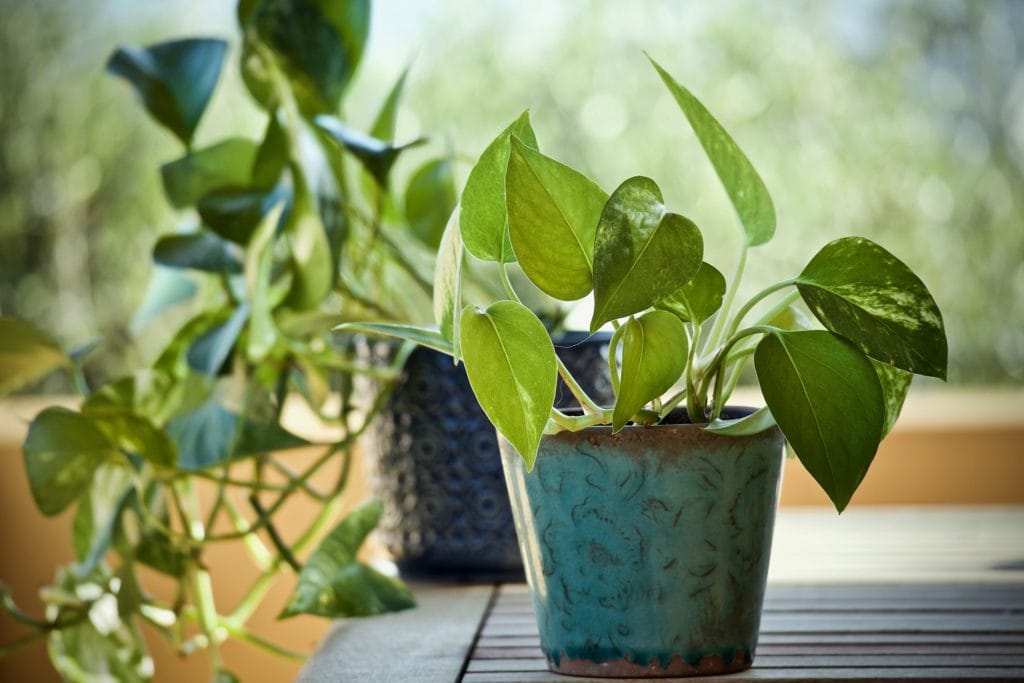
Growing the popular pothos plant doesn’t require much effort. These evergreen plants have green, waxy, heart-shaped leaves and are common in many homes. They can also be grown outdoors, often providing a beautiful addition to front porches, patios, and backyard decks.
You don’t need to be an expert gardener to grow these plants indoors or outside your home, as they don’t require much to thrive. However, it’s best to note the general care needed for the plants including watering from sunlight, soil preferences, and general maintenance. That being stated, how much water do pothos plants need?
When To Water Your Pothos? How Much?
A general rule of thumb is to water your pothos plant whenever it needs hydration. This requirement will change throughout the year, depending on where your plant is in your home and how much sunlight it receives.
If you’re growing your plant outdoors, it’ll depend on the region you live in and the average temperature and humidity levels in the area. Many indoor growers water their plants every couple of weeks during the spring, summer, and fall months, and about every 3 to 4 weeks during the colder months of the year.

The Finger Soil Test
One of the best ways that you can do this is to simply perform the “finger soil test”. For this test, you simply need to dip your index finger into the plant’s soil until it’s about 1-2 inches beneath the top layer. When you remove your finger, it shouldn’t be completely dry.
If you remove your finger and it’s completely dry or if you have trouble inserting your finger into the soil because it’s too dry, chances are your plan needs to be water. When you remove your finger, it should be slightly moist from the soil. If the soil is overly moist, you may not need to water the plant for another week or so. When working with new plants, it’s best to try this test every week to help you determine how often you need to water your plant each season.
How to Water Pothos
To water your plant, simply place spring water in a watering can and pour it into the surrounding soil. It’s best not to water one specific area of the soil but to go completely around the pot in a circle so that all of the plant’s roots have the ability to absorb the water directly. Also, you don’t need to mist your pothos plant with water, as the roots will absorb all of the hydration that the plant needs — which will be carried up through the stems to the leaves.
Common Signs That Your Pay Those Needs Hydration
Before your plant gets too dry, you will often see a few tell-tale signs that it is in dire need of hydration. This is why it’s essential to pay attention to your plant every day to ensure that it’s thriving, and not on the verge of a serious health condition. Here are a few common ways to tell when your plant needs water.
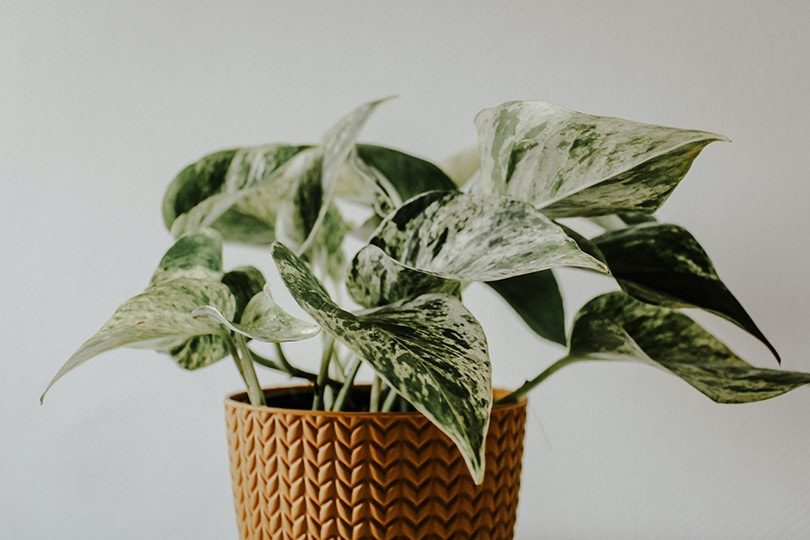
Drooping & Sagging Leaves
The first sign that your plant needs more water is drooping leaves at the base of your pothos — this usually starts at the bottom up. The leaves will fall as the plant dries further. As the soil dries, eventually all the leaves will fall off and they may even turn yellow before they fall off.
This is common for both those plants that aren’t officially hydrated in the summer months or those that receive a lot of daily sunlight and are under-watered. It’s also helpful to remember that pothos plants in smaller pots will typically dry faster than those in larger pots.
The Soil Is Dry and Crumbly
As we mentioned earlier, one of the biggest signs that your plant needs water is when the soil is dry and crumbly. The soil should be moist and loose, indicating that the roots don’t have enough access to the water. If it’s compacted or dry, it means that the plant isn’t being sufficiently hydrated, which can lead to issues.
Browning or Withered Leaves
When a pothos plant begins to dry out the leaves may initially begin to sag and turn yellow. If the plant still doesn’t receive proper hydration and the leaves will begin turning brown and wither. They will turn browner at the base of the plant, and the browsing will eventually go down into the plant’s roots if left untreated.
However, you’ll still have time to save your plant with a good watering and session. Before watering the plant, however, it’s best to first trim the brown leaves and stem off of the plant and then give it a deep watering.
Caring For Pothos Plants
Pothos plants grow relatively fast and are hard to grow in zones 9-11. While it’s fairly easy to care for these plans, there are a few things that they need for basic survival.
Fertilizer
Fortunately, pothos plants don’t need to be fed fertilizer very often. If they do, it’s typically because they are recovering from illness. As long as you have loose-draining, rich soil your plants should do just fine with regular watering. If you do need to provide fertilizer at some point, it’s best to go with an all-purpose fertilizer. You can apply the fertilizer to the plant’s water, apply pellets, or sprinkle it into the soil.
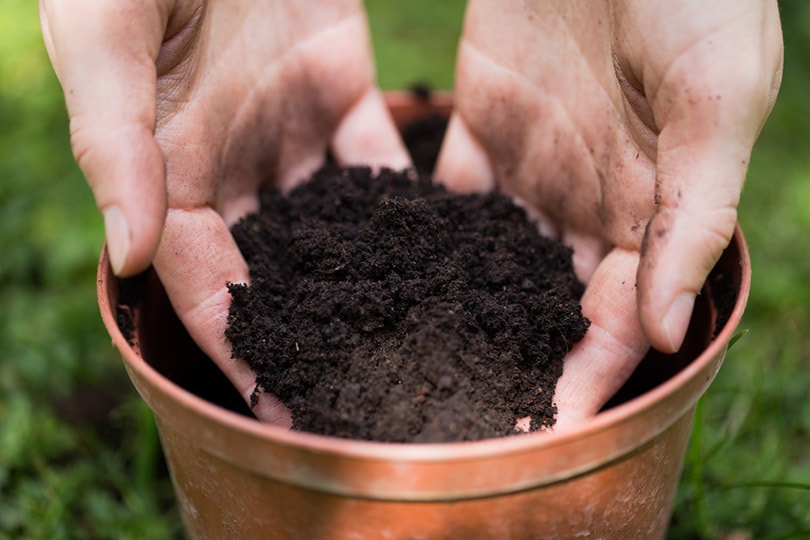
Loose, Well-draining Soil
When planting these plants, it is best to use well-draining soil. The standard potting mix is fine, but adding a bit of perlite, peat moss or typical compost to the mixture will improve drainage. You’ll also want to ensure that you have at least one drain hole on the bottle of the plant pots to prevent waterlogging.
Daily Sunlight
This brings us to our next point, sunlight. Sunlight is the source required for almost every plant and living being on this earth. Pothos plants prefer semi-direct sunlight and typically need anywhere from five to six hours a day. However, they can survive in semi-lit areas, though they may not grow as tall.
It’s best to refrain from planting these plants in direct sunlight, as it can cause the leaves to scorch. Or if you do place them in direct sunlight, be sure to only leave them there for about 45 minutes to an hour to avoid this.
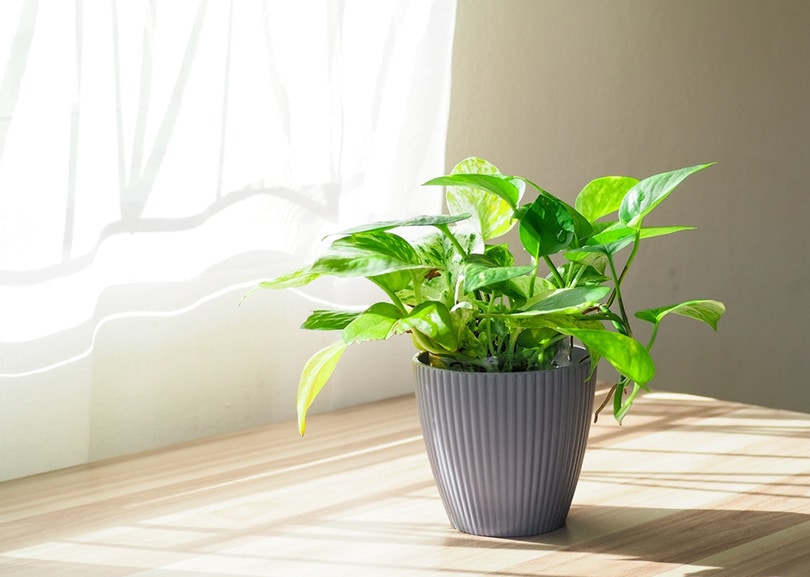
Moderate Temperatures
Pothos plants prefer moderate to warmer tropical temperatures. They thrive in temperatures between 65- and 85-degrees Fahrenheit, which is ideal for many areas and the United States. However, they are sensitive to cold so they should be kept out of cold drafty areas and away from windows that are cold or areas that aren’t heated.
Weekly Watering
As mentioned earlier, these plants do require regular watering to survive. Depending on the time of the year, you’ll need to water the plant anywhere from two to four times every month. Warmer months will typically require more watering, as the plant’s roots will easily suck up any moisture during times of dry and sunny weather.
Pest Prevention
A pothos plant can be infected by common plant pests including aphids and mealybugs, which will be located on the backside of the leaves. These bugs thrive in moist, warm environments or on plants that are dying or unhealthy. To kill them, you can wipe the leaves of pothos with rubbing alcohol, diluted neem oil, or a biodegradable detergent water mixture. You can also simply rinse the plant and water to remove the bugs.
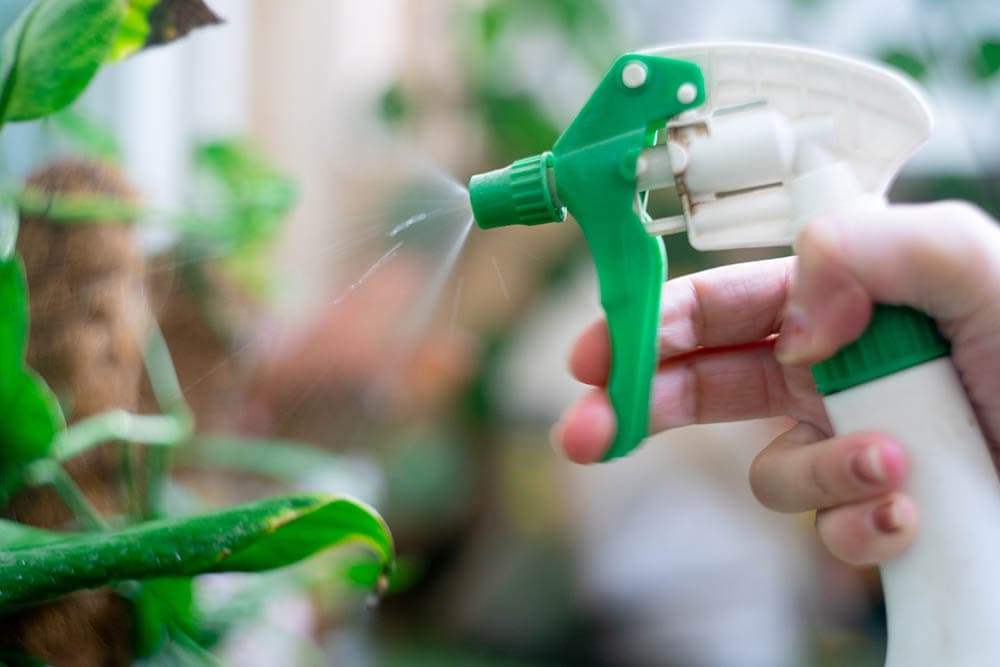
Dust Removal
Pothos plants, like most houseplants, can gather dust on their leaves, which will hinder their growth if it’s not kept at low levels. Naturally, these plants will attract a lot of death if they are placed in open areas such as living rooms or outside on porches, patios, or decks.
It can also occur in rooms that have poor circulation and don’t receive a lot of airflow. When the plant attracts too much dust, it inhibits its ability to photosynthesize efficiently. This can ultimately lead to growth issues. But simply wiping the plants down with a damp cloth or paper towel can help to keep dust levels to a minimum.
Prevent Root Rot
Root rot can occur when you overwater your pothos plants–another reason why the water test is so essential. Pothos plants don’t fare well in soggy soil and it can cause a fungal condition called root rot. Note that root rot is fairly difficult to reverse once it has begun. However, you can take the plant out of its container and trim off any rotten roots and replant it in a new container with fresh soil to help restore it.
Wrapping Things Up
The pothos plant will require watering about every couple of weeks or so, depending on the season. The location of the plant will also play a part in how often you’ll need to water it. It’s best to check the plant every week to ensure that its hydration levels are adequate and that its water is draining well. Overall, you’ll find that this plant is very easy to care for, but it will require daily sunlight, loose well-draining soil, and hydration in order to thrive.
See also:
- How to Propagate Pothos in Water (10 Expert Tips)
- How To Make Potting Soil for Pothos Plants (Step by Step Guide)
- https://www.swansonsnursery.com/blog/pothos-indoor-plant
- https://www.gardeningknowhow.com/houseplants/pothos/pothos-plant-care.htm
- https://www.thesill.com/blog/how-to-care-for-golden-pothos-epipremnum-aureum
- https://www.thespruce.com/pothos-an-easy-to-grow-houseplant-1403154
- https://www.hgtv.com/outdoors/flowers-and-plants/pothos-plant-care-and-growing-tips
Featured Image Credit: sweetlouise, Pixabay
Contents


